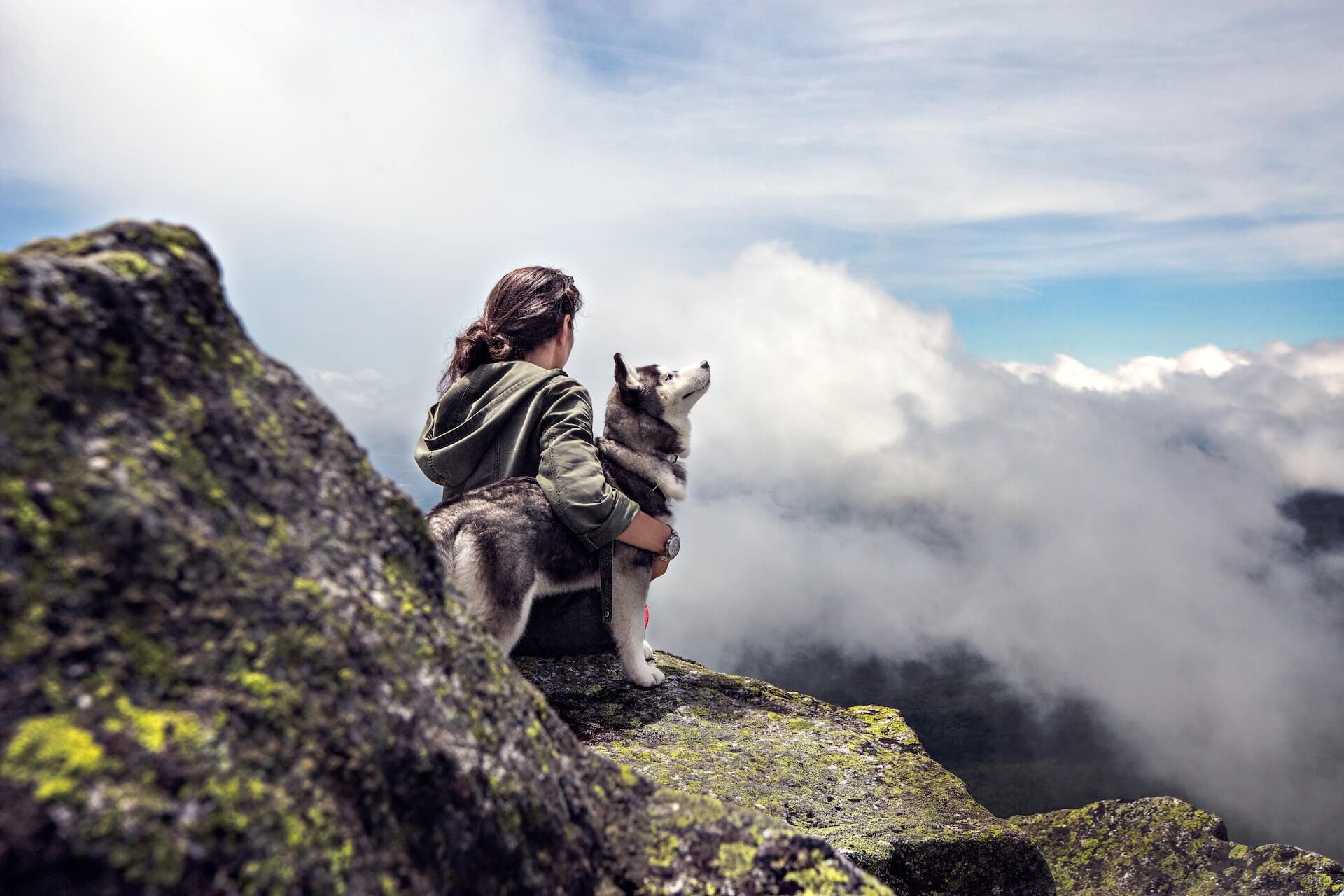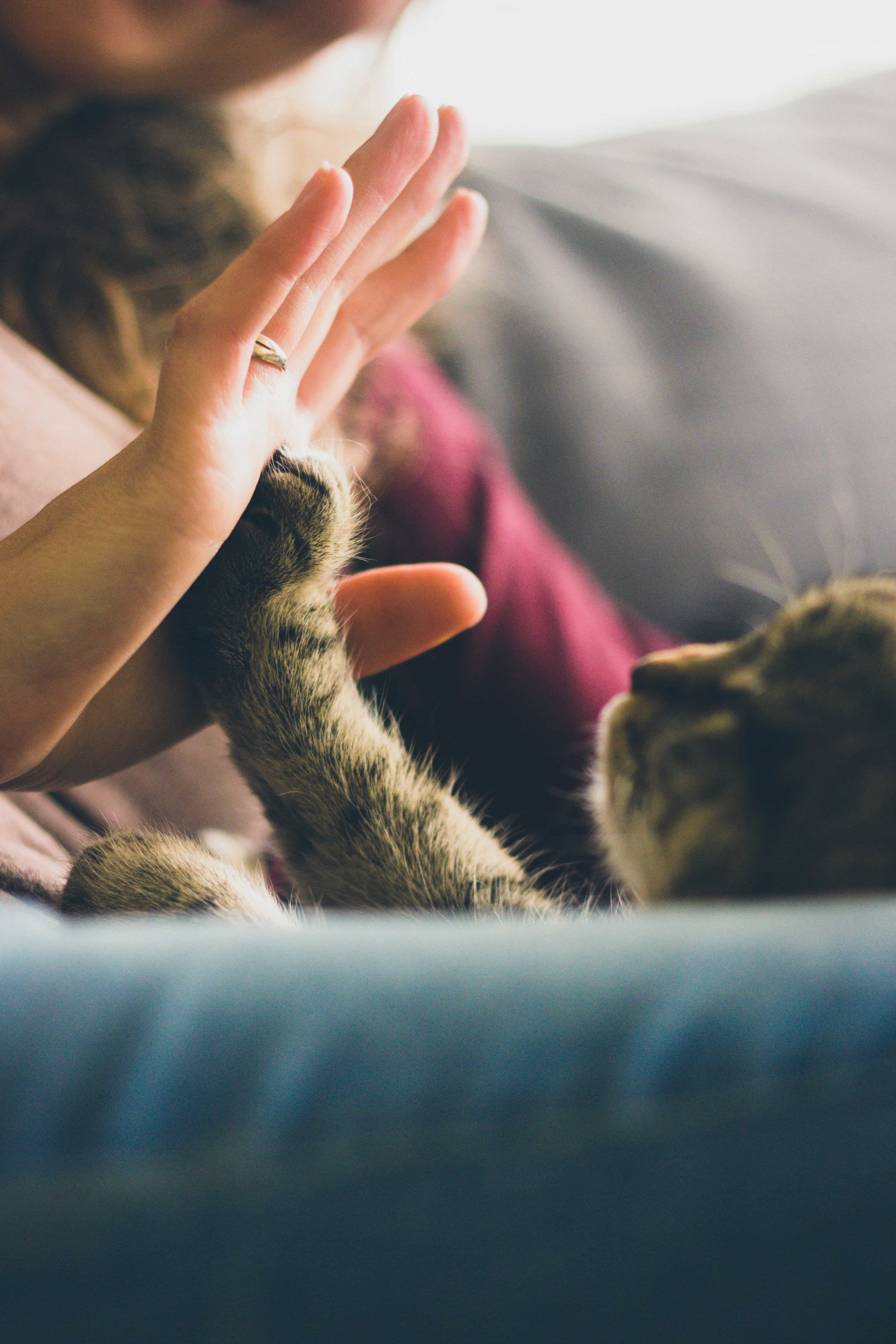
Burying a dog, cat & co.
Funeral Options for Beloved Pets
Birth and death, blooming and withering, arriving and saying goodbye. Life is a perpetual cycle of ups and downs, as well as life and death. Transience, therefore, plays a significant role—even if many of us don’t want to acknowledge it. A glance at nature is enough to know that it is an important part of our journey here on Earth. Many of us, over the course of our lives, have to say goodbye not only to beloved people whose time in this world has come to an end but also to pets. From the beloved cat who always greeted us with purrs at home to the cherished dog with whom we walked through all seasons. But what options are available for burying cats, dogs, and other animals? And what can such a farewell look like? We clarify the legal situation and have gathered ideas for burial rituals.
Burying Cats, Dogs & Other Beloved Pets: Legal Aspects
The laws vary by country and state, and they can differ significantly, especially regarding weight limits or burial sites. Therefore, it is essential to be well-informed beforehand. In case of doubt, municipalities, pet undertakers, or veterinary offices can provide information. Below, we have summarized the most important regulations for Austria, Germany, and Switzerland:
Austria
In Austria, deceased animals are generally required to be disposed of. The reason for this is to counteract potential epidemics and diseases. Therefore, pet owners are obligated to hand over deceased animals to an approved facility.
These are primarily collection points in the municipalities. In Vienna, the animal carcass disposal service even picks up the deceased animal directly from you. However, for many people, it is unimaginable to "dispose of" a beloved companion in this manner. Therefore, there is also the option to bury dogs, cats, and other pets in an animal cemetery. For individual graves, you should expect to pay at least 150 euros, in addition to the costs for grave rental and maintenance.
Alternatively, you can have your pet cremated in an animal crematorium, allowing you to take an urn home. Depending on the size of the animal, such a cremation can cost between 70 and 400 euros. It is also permitted to bury the pet on your own property. This applies particularly to dogs, cats, and small animals.
The most important requirements for this are: The animal must not be suspected of having an epidemic, the burial site should be at least two meters away from the neighbor's garden, and it should be sufficiently deep.

Germany
Similar regulations and financial guidelines apply in Germany. There, facilities for animal carcass disposal have also been established, and there is the option to bury or cremate the animal in a designated cemetery.
Animals may also be buried on private property, provided all regulations are met. These include: The animal must be buried at least 50 centimeters deep and must not have suffered from a notifiable disease. Additionally, the property must not be located in a water protection area or near public paths.
Switzerland
In Switzerland, animal cemeteries or crematoria can also be used for burial. In terms of costs, a grave costs at least 500 francs for three years. Cremation with an urn costs about the same.
Animals that weighed no more than 10 kilograms can also be buried at home in the garden, provided the soil layer above the animal is at least 120 centimeters thick and the grave is at least two meters above the groundwater level and away from water sources. Groundwater protection zones and areas are also off-limits, and the animal carcass must not be wrapped in plastic.

Haustier im Garten bestatten: Schritt für Schritt
Burial of a Pet in the Garden: Step by Step
If you decide to bury your pet in the garden, you should consider the following:
- Use only biodegradable, sustainable materials without plastic. For example, you can wrap the pet in a cotton cloth, have a wooden coffin made, or use a cardboard box.
- Dig a sufficiently deep hole—different minimum measurements may need to be observed depending on legal regulations—and sprinkle the bottom with some lime. This can bind unpleasant odors and accelerate the decomposition process.
- Create a small mound, as the soil will settle later due to rain and compression.
- Cover the grave with stones to make it more compact and to prevent other animals from digging it up. Decorate it with arrangements, flowers, or a cross.

Farewell to a Beloved Pet
Ideas for the Funeral
If you lay your dog, cat, or other pets to rest in an animal cemetery, you will have a place to remember your beloved pet. The same applies to a grave on your own property. If you choose cremation, you can take the urn home and place it in a special spot. No matter what you decide, the surrounding aspects are important to many people—meaning, the farewell. Here are a few ideas for this final goodbye:
Farewell Ceremony: When a person dies, we gather to remember their life and then let go. Why should this be reserved only for humans? You can also organize a farewell ceremony for your pet. Gather people who loved the pet as much as you did. With candles, atmospheric music, and good food, you can share memories together. Maybe someone has a story or song about the pet, or you can look through old photos together.
Farewell Letter: For some people, it is easier to let go of sad or negative thoughts through writing. It can be meaningful to write a farewell letter to your beloved pet. Recall shared activities or express your gratitude for everything your pet has given you.

Grave Goods: In many cultures, grave goods are essential—you can also give your pet something for their final journey. For example, a blanket, treats, a photo, a dog bone, or flowers.
Walk: If you are saying goodbye to a beloved dog, you can take their favorite walk on the day of the burial, saying farewell step by step.
Like-Minded People: Sharing with like-minded people can help in acute grief. Other dog owners often understand these feelings better than people who don't have a four-legged friend.
Memorial Piece: If you want to keep your pet close even after death, you can have a special keepsake made. We at Mevisto create high-quality and unique jewelry from the ashes or hair of beloved pets (Link: https://www.mevisto.com/de/edelsteine/stein-des-tieres/), helping you through the grieving process and creating a lasting memento.
Doing Good: In times of grief, it can be healing to volunteer and help other animals. Offer to walk your neighbor's dog, give leftover food to other pet owners, or donate money to animal organizations.

